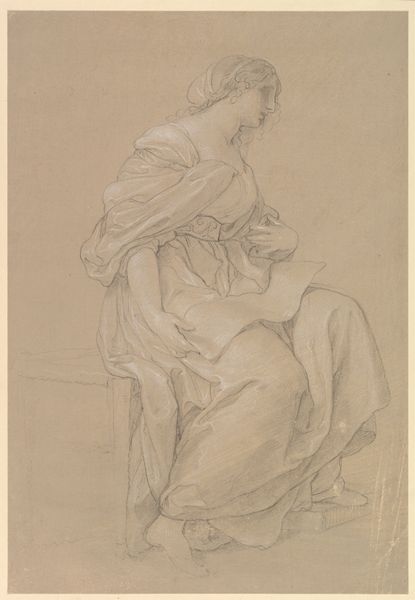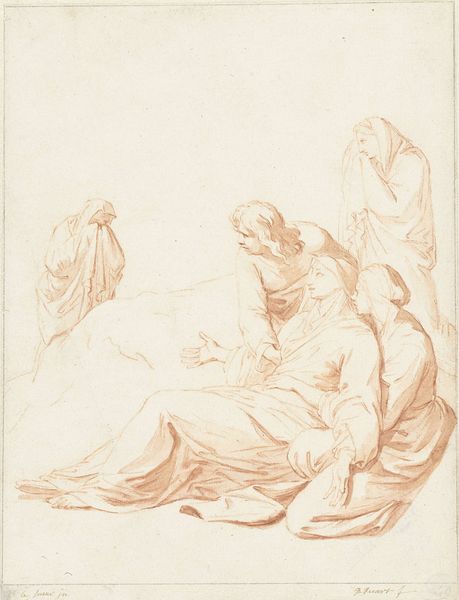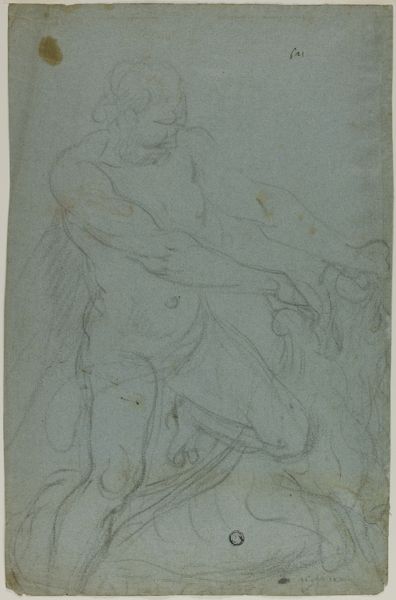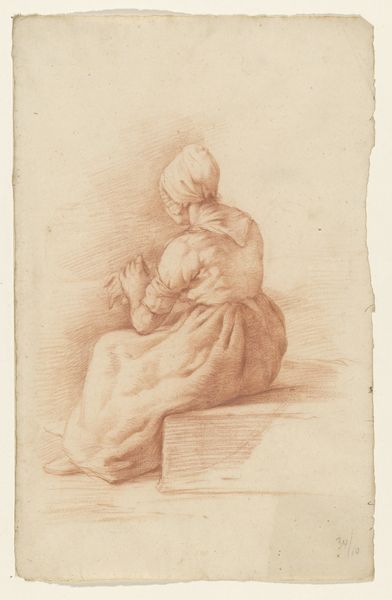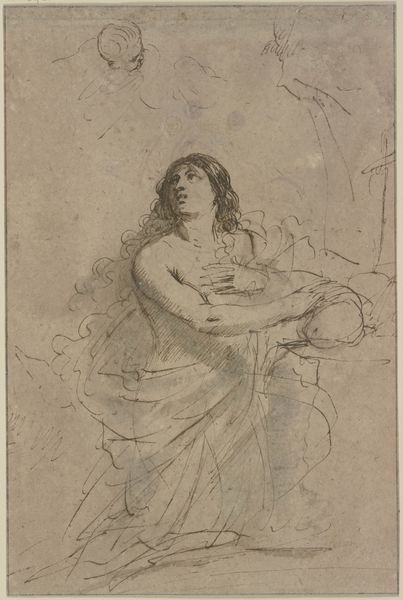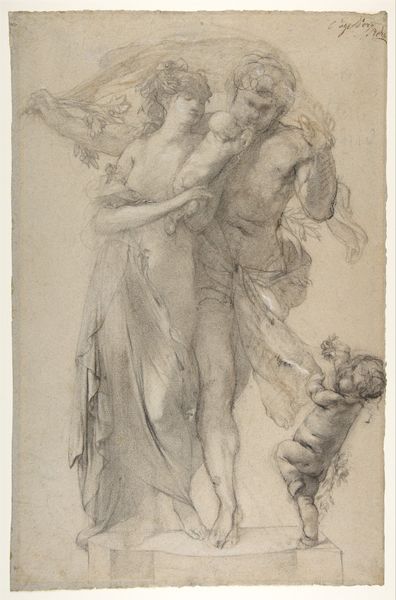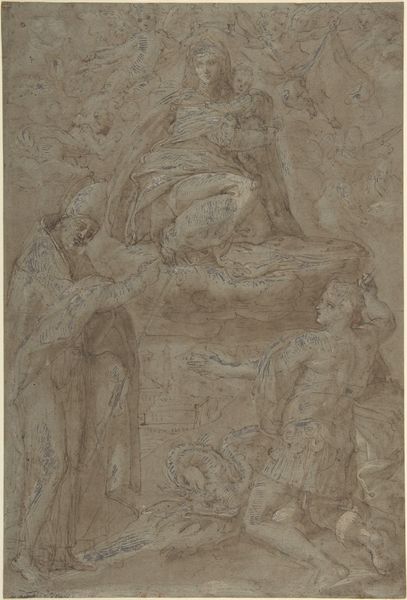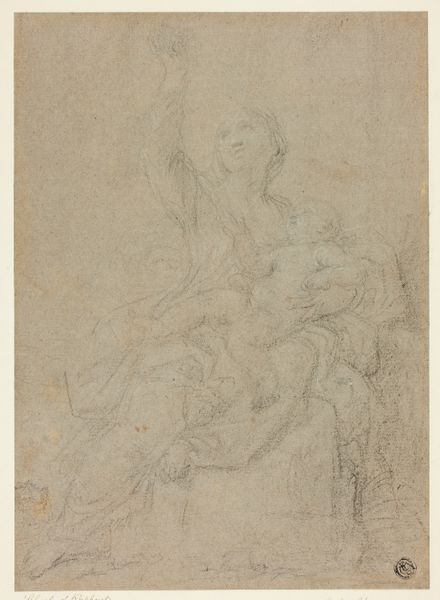
Study for a Seated Prelate (Saint Gregory the Great) 1685 - 1686
0:00
0:00
drawing, print, pencil
#
portrait
#
pencil drawn
#
drawing
#
baroque
# print
#
pencil sketch
#
charcoal drawing
#
pencil drawing
#
underpainting
#
pencil
#
portrait drawing
#
academic-art
Dimensions: 15-3/8 x 10-1/4 in. (39.1 x 26.0 cm)
Copyright: Public Domain
Editor: This is Carlo Maratti’s “Study for a Seated Prelate (Saint Gregory the Great),” created around 1685-1686. It's a pencil drawing, a study for a larger work, maybe? It has a kind of preparatory feel to it. What do you see in this piece that really stands out, especially considering its place in the social context of art at the time? Curator: What strikes me is how this "preparatory feel" reveals the artistic process itself. These studies, often unseen by the public, provide insights into the academic art world and the power dynamics within art production. The papacy, particularly in the late 17th century, still heavily influenced artistic patronage and subject matter. Editor: So the choice of Saint Gregory, a pope himself, is deliberate? Curator: Absolutely. And notice the precision of the drapery, the attention to detail, typical of the academic style favored by institutions and powerful patrons. The artwork not only displays Maratti's skill but also aligns him with the established artistic and political order. How does this study function in creating, reinforcing or subverting these historical narratives and what it represented back in its day? Editor: Interesting. So, while seemingly a simple drawing, it reflects the larger power structures at play in the art world? Curator: Precisely. It prompts us to question how artistic skill becomes entangled with social expectations and political messaging. And where this specific piece could fit in, in relation to more controversial Baroque pieces of the time. Editor: I hadn't thought of it that way. Seeing it as more than just a study but as a reflection of the artist's negotiation within the political landscape. Thank you. Curator: The pleasure is all mine. Analyzing art in its historical and political context offers such a richer, fuller view, doesn’t it?
Comments
No comments
Be the first to comment and join the conversation on the ultimate creative platform.

